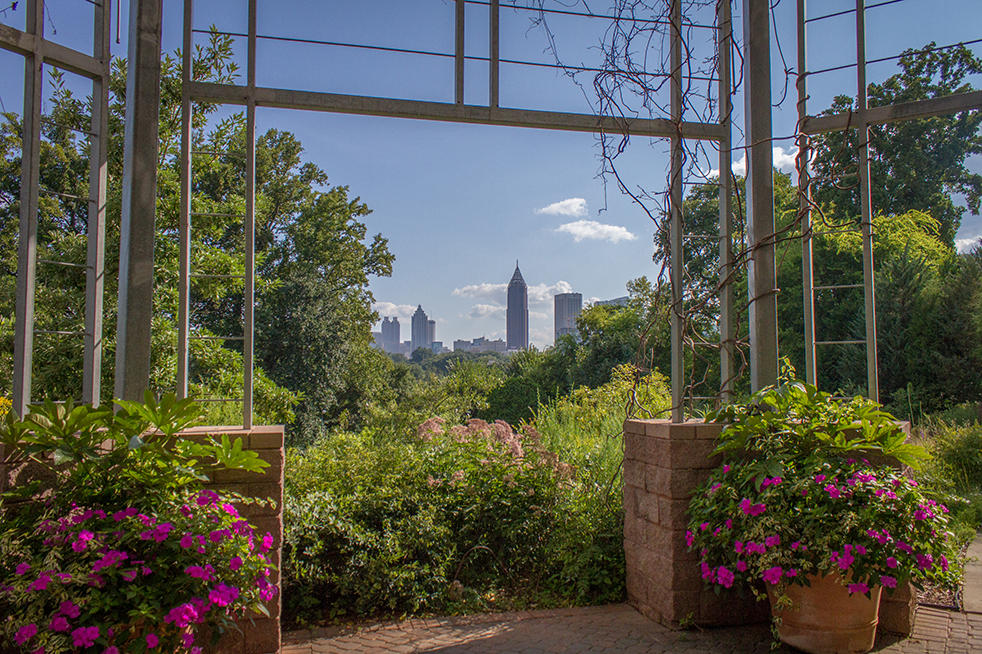As of last month, the Emory Shuttle Bus makes a stop at the Atlanta Botanical Garden.
The bus keeps its original route, which loops from Tech to Emory University’s Health Sciences Research Building. The schedule for the bus arrival and departure remains the same as that displayed on Nextbus app.
“Freshmen parents have asked about cultural programs and events that students can participate near Georgia Tech. The partnership with Atlanta Botanical Garden is now one more program we can refer to as available for students,” said Torise Battle Young, Communications Officer of Parking and Transportation Services (PTS).
In addition to the new stop, PTS plans to present options for access to the garden through promotions of special memberships.
Since about four years ago, Tech faculty and graduate students from the Introductory Biology class found a ground for growth in the garden, one of the major venues in Atlanta. The Urban Habitat Restoration Project attempted to transfer research applications to the garden. Professors and other staffs of the Center for Biologically Inspired Design have made visits regarding the research.
The project carries out restoration efforts with an emphasis on sustaining native plants and wildlife in an urban center. Students designed research projects that would help to measure the biological impacts of restoration activities. According to PTS and the Parking and Transportation Committee of the Student Government Association (SGA), the students involved in the garden’s research project suggested ideas for the stop.
“About two years ago I started using a new route to drive to work at the Garden. I noticed that I was driving behind the shuttle both on my way to and from work,” said Jennifer Cruse-Sanders, Ph.D. and a Vice President for Science and Conservation of Atlanta Botanical Garden. We have been working with faculty and students at Georgia Tech and Emory for a number of years. It made sense to take advantage of this opportunity to increase access to the Garden for our academic neighbors. I met with Lance Lunsway and David Williams at GA Tech Parking and Transportation Services to talk about this idea. I am delighted that they thought it was a good idea too and helped to make it happen.”
The laboratory was developed by Dr. Cara Gormally when she was at Tech. It has also been developed by Zhichao Pu, while he was a graduate student in Lin Jiang’s lab and the Biology lab is now run by Dr. Patrick Bardill.
One of our most productive collaborations with Tech has been with Dr. Jerry Pullman, now Emeritus Faculty. They started working with Pullman in 2010 to develop laboratory technologies that help us to conserve rare plant species. Since that time many students have worked with rare plants that are propagated at the Garden to apply new technologies developed in Jerry’s lab that help us conserve them. This has resulted in at least five publications with Tech undergraduates as first authors.
Some of the species that Jerry and his students have worked with include Florida Torreya, pitcher plants, swamp pink, Georgia aster, Tennessee yellow-eye grass, dwarf sumac – all rare plants that are protected under the Endangered Species Act
“We are hoping to bring new audiences to the Garden and introduce more people to our collections and programs,” Sanders said. “Most people don’t know that the Garden has a Conservation Research Department with a Molecular lab, Micropropagation lab, and frog conservation labs because these things are behind the scenes and most of our work is away from the Garden in natural habitats. We are hoping to bring more awareness to the science and conservation work that we do by connecting with the Georgia Tech and Emory communities.”
